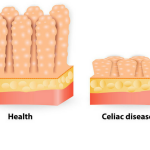Working with Genes: Integrating Genetic Health Reports into Clinical Practice
Tom Ballard, ND
Practice Building
Medicine has entered the “genome era.”1 Genetic reports are already helping practitioners and patients identify and treat chronic health conditions.2,3 “Recent developments in genomic sequencing technologies offer the potential to revolutionize the diagnosis and treatment of many diseases…”4 The goal of this article is to help practitioners select a genetic health report that will work best for their patients.
Genetics, Epigenetics, & Personalized Medicine
You’re probably already familiar enough with genetics and epigenetics to realize their potential for improving the diagnosis and treatment of patients. Genetics takes one of the goals of naturopathic medicine – personalized medicine – to a new level. I’m not going to be delving into genetics in this article. I would, however, like to make 2 points.
First, my impression from talking with other practitioners is that many of them have avoided studying epigenetic medicine because of what appears to be a steep learning curve. One study found that, “The majority of genetic health professionals lack confidence in being able to accurately interpret and explain…results.”3 My response is this: Learning genetics is not as difficult as it might appear. If you use the appropriate report, much of the work is done for you. To become an epigenetic practitioner, all you need is familiarity with basic genetics, familiarity with approximately 12 major genes, and a working knowledge of methylation, trans-sulfuration, and COMT pathways. Naturopathic doctors and other whole-system, functional practitioners have already accomplished the most difficult part of applying epigenetic medicine: Learning lifestyle medicine – the therapies that Nurture our genetic Nature.
My second point is a political one. If the whole-systems, alternative community does not embrace epigenetic medicine and claim it as our own, then it will be controlled and corrupted by the medical-industrial complex. Simply put, the choice is between epigenetic doctors who practice by “nurturing” genes and the dominant medical system that sees the human genome as something to manipulate.
Which Genetic Health Report to Use?
Keeping up with genetic testing services can be challenging. Science and business are moving quickly. There are, however, currently a dozen or so companies that have been providing genetic analysis and reports for several years now. With an hour or so of searching, you can find a report service that fits your practice.
Based on my clinical experience utilizing genetic testing for the past 4 years, here are some ideas about how to evaluate genetic report companies.
Types of Testing/Reports
There are basically 3 ways to produce a genetic health report:
- Do it yourself using raw genetic data from a gene-testing company
- All-in-one testing and reports: These are provided by companies that do the genetic testing and the interpretation
- Third-party reports: These are provided by companies that take raw DNA data and construct a health report from it
Do It Yourself Using Raw Data
There are ways of performing in-depth analysis of your patient’s genes without the use of a report service. These can be quite time-consuming and are not suitable for clinic use, but rather for burning the midnight oil.
- Step 1: Collection
The most common way to collect genetic data is through one of the large genetic analysis labs. Cost range is $99–$199.
- Step 2: Analysis
This involves looking up genes through free online services such as SNPedia and GeneCards – a labor-intensive project.
All-in-One Testing & Report
Several companies take the patient sample, analyze the genes, and produce an interpretive report. The number of genes studied and the scope of the report vary greatly, as do the prices. On the low end, the price is around $200 for a few genes. On the high end, the price is $4000 per year and includes online support.
Third-Party Report Providers
The size and scope of third-party reports vary greatly. Rule to work by: The more the report provides, the less you’ll need to research and remember. Prices range from a donation to around $500.
What to Look For in a Genetic Report
List of Genes Tested/Reported
The number of genes tested ranges from 8 to 1400. Some companies do not make this information available. Ideally, only clinically relevant genes are reported. This, however, is difficult to pin down, since researchers continue to explore possible associations. For reports that include genes of secondary importance, clinical relevance can be updated as it emerges.
- Gene function = Clear explanation of what the gene does under normal circumstances
- Example of lab commentary: “The GAD gene codes for an enzyme that converts glutamate (an amino acid) to GABA (a neurotransmitter). Glutamate is neuro-excitatory (stimulating), while GABA is relaxing…”
- Disease tendency = A list of diseases or symptoms that have been found to be associated with this gene variation
- Example of lab commentary: “Low-functioning GAD enzymes increase the ratio of glutamate to GABA, thereby increasing nervous system stimulation. This may result in agitation, insomnia, restless leg syndrome, and other symptoms of neuro-excitation…”
- Note: You do not want a report that states a percent chance of developing a disease. This is counter to the epigenetic evidence that Nature (genes) and Nurture (lifestyle) are in a 50/50 balance.5
Organization
- Prioritization: The downside of reports that cover hundreds of genes and a dozen or more categories is having to sort out which ones are the most important. The better reports help you do this.
- Example of lab commentary: “You have three homozygous GAD gene variations which makes it likely that you’re sensitive to glutamate and possibly low in GABA.” Or, on the other hand: “With only one heterozygous GAD gene, this pathway is unlikely to be a major health concern.”
- Guidance in further testing: Since we know that genes do not cause a disease but may predispose a person to it, further testing is helpful in making a diagnosis.
- Example of lab commentary: GAD Testing/screening: “Blood glutamate and GABA testing are available. A basic screen for GAD gene variation is a reaction to foods containing monosodium glutamate (MSG)”
- “Patients with reduced GAD function will often experience flushing, headaches, and flu-like symptoms from eating MSG…”
- Treatment options: This is especially helpful for practitioners who are not well trained and experienced in lifestyle modification therapies.
- Example of lab commentary: “For glutamate sensitivity, reduce glutamate-containing foods. Glutamate is found in…”
- “The cofactor for GAD is activated vitamin B6 (P5P). Eat foods rich in B6… and consider supplementation…”
Functional Categories
A helpful element with gene reports is organizing data by functional category. Here is a list of commonly used functional categories:
- Liver Detox – Phase I & II
- Yeast/Alcohol Metabolism
- Methylation
- Trans-sulfuration and Glutathione Pathway
- Neurotransmitters 1: Serotonin & Dopamine
- Neurotransmitters 2: Glutamate & GABA
- COMT/MAO Activity
- Mitochondrial Function
- Alzheimer’s Disease
- Cardio/Lipid
- IgG
- IgA
- IgE
- Clotting Factors
- Celiac Disease/Gluten Intolerance
- Thyroid
- Eye Health
Note: Be cautious of report services selling nutritional supplements. While not necessarily a non-starter, these companies raise the specter of bias. In addition, supplements are only one consideration, and usually not the first one, in treatment options.
The Epigenetic Appointment
There are 2 types of clinic appointments involving the use of genetic health reports: those in which the patient comes in with genetic information in hand, and those in which the patient has no report.
An appointment with a patient who brings their genetic report will vary depending on what patients bring to the table. They may only bring in raw data or – at the other extreme – a 150-page, well organized report. In between are the patients who have limited reports listing only a small number of genes and low levels of interpretation.
In appointments with patients who do not yet have a genetic report, you will need to decide whom to test. Genetic testing is a consideration for patients in these 3 categories: patients who are health enthusiast; patients with a poor family history: “What can I do to not get___”; and, patients who are challenging because they are difficult to diagnosis, haven’t responded to treatments, and/or react idiosyncratically to treatments.
Patient with Genetic Information in Hand
Patient with Raw Data Only
The first step with these patients is to explain the difficulty of translating raw data into usable information. You’re either going to take on the role of interpreter yourself, or enroll the aid of a third-party report provider. Either way, your approach is going to depend upon your level of comfort, time, and billing method.
- Fee-for-services package
If you are a fee-for-service provider, a viable option is to set up a genetic report package, ie, establishing a set price for translating and reporting the patient’s raw data. You then have the option of doing all the research legwork yourself – not recommended! Better yet, enlist the help of an all-in-one or a third-party report provider.
- Insurance providers
It’s unlikely that you will find an insurance provider willing to pay for your time to interpret raw genetic data. In such a case, the burden of payment falls to the patient. Obviously, it’s good to have already studied the available services and to have identified one you can recommend. Once there is an existing report, however, you can bill insurance for your clinic time involved in presenting the report. If it’s a report you’re familiar with, this can be done in 10–15 minute bites over several appointments, for which you can be compensated.
Patient with a Genetic Health Report
Whether the patient brings in a bare-bones or comprehensive report, your first steps are the same, whether you’re a beginner or an expert.
New patient, first appointment:
- Educate
It’s important to not become bogged down in a genetic report until you know the patient. Assure the patient you’ll study it, but that you’re treating them, not the report. Educate them about epigenetics and dispel the “gene = health” myth.
- Personalize
The bedrock of personalized medicine is knowing the patient. A thorough health history, physical exam, and possibly lab testing are necessary. You may want to give the patient homework assignments such as a diet/symptom diary.
Second or third appointment:
Since the time of your patient’s first appointment, you’ve studied their report. By the second or third appointment, you will have a lot of specific data on the patient. First, though, prioritize the patient’s health concerns. Don’t tackle everything out of the gate. Focus on their 3 to 5 principle concerns.
If the patient’s genetic report is simple, eg, only containing MTHFR and a few CYP detox genes, then the treatment will follow from those. If the report is more robust, then you will need to prioritize the most important genes. To do this, simply match genes to your patient’s health concerns. Search the report for genes associated with the patient’s signs, symptoms, and diseases. For anxiety, as an example, you might zero in on the patient’s MTHFR, MAO, and COMT genotypes.
You can also rule out any genes variations that don’t seem relevant. For example, if your patient has genetic polymorphisms related to high blood pressure but their blood pressure has always been normal, then set those genes aside for now. They’re not manifesting. Matching genes to health concerns gives you focus for your first round of epigenetic treatments.
Sample Patient
Here is a synopsis of a typical patient encounter.
A 49-year-old school teacher named Mary presents to the office with insurance but without genetic testing information. Her chief health concerns are fatigue, weight gain, insomnia, and rising blood pressure (BP). Mary has been to many doctors and brings in a written medical history and copy of laboratory testing from her recent past.
First Appointment
- History & Physical exam
- Prioritize health issues
- BP (because hypertension is potentially life-threatening)
- Fatigue
- Insomnia
- Weight gain (listed last because weight will often normalize on its own when other health issues are resolved)
Genetic Testing: Yes or No?
This is a patient with whom I would broach the subject of genetic testing. Not because her conditions are especially difficult to treat under normal circumstances, but because she has already seen multiple doctors and had the usual laboratory testing done. She has proven to be a difficult-to-diagnose-and-treat patient.
Let’s assume that she is open to this suggestion.
Fitting Mary’s genetics to her insurance appointments
- Appointment 1: Spend about five minutes of explaining, justifying, and providing written materials to take home regarding the advantages of a genetic health report.
- Appointment 2: You’re still gathering other data. Mary has decided yes or no to the testing. If yes, you explain the process and the timing. The specimen is usually saliva or cheek scraping, and the process can take 2–6 weeks depending on your choice of services.
- Appointment after receiving the genetic report: You have already studied the report outside of clinic. Do a 10–15-min overview of the report, highlighting the genes you’ve identified as the most relevant. Modify your earlier treatments to address these genes, and send the patient home with a copy of the report to study.
- Subsequent appointments: These may be anywhere from 2 weeks to months apart depending on the severity of the patient’s condition, number of gene variations, and response to treatment. At each appointment, along with your usual subjective and objective evaluation, genes and focused treatments can be discussed as needed.
Conclusion
Working with patients’ genetic information has proven itself valuable for enhancing the diagnosis and clinical outcomes of patients. In my experience, genetic health reports integrate smoothly into clinical practice, even with insurance patients. The learning curve to becoming an epigenetic practitioner is flattened by a few hours of study and the employment of a comprehensive genetic health report.
References:
- Guttmacher AE, Porteous ME, McInerney JD. Educating health-care professionals about genetics and genomics. Nat Rev Genet. 2007;8(2):151-157.
- Berg JS, Khoury MJ, Evans JP. Deploying whole genome sequencing in clinical practice and public health: meeting the challenge one bin at a time. Genet Med. 2011;13(6):499-504.
- Brett GR, Metcalfe SA, Amor DJ, Halliday JL. An exploration of genetic health professionals’ experience with direct-to-consumer genetic testing in their clinical practice. Eur J Hum Genet. 2012;20(8):825-830.
- Hall A, Finnegan T, Alberg C. Realising Genomics in Clinical Practice. December 5, 2014. PHG Foundation web site. http://www.phgfoundation.org/reports/16447/. Accessed January 15, 2017.
- Polderman TJ, Benyamin B, de Leeuw CA, et al. Meta-analysis of the heritability of human traits based on fifty years of twin studies. Nat Genet. 2015;47(7):702-709.
 Tom Ballard, RN, ND, graduated from Bastyr University in 1982 and is honored to have been its first valedictorian. Since then he has maintained a successful practice in Seattle. Dr Ballard has lectured around the world as well as authored numerous articles and books, including Genetic Wellness: The DNA life plan for overcoming chronic disease, Nutrition-1-2-3, Genetic Health Reports: Selecting the best report for optimizing your health, and a naturopathic suspense novel – The Last Quack. Dr Ballard has also produced a number of videos available on his YouTube channel: Tom Ballard ND. In 2013 he founded www.NaturalDNASolutions.com, dedicated to promoting natural genetic medicine.
Tom Ballard, RN, ND, graduated from Bastyr University in 1982 and is honored to have been its first valedictorian. Since then he has maintained a successful practice in Seattle. Dr Ballard has lectured around the world as well as authored numerous articles and books, including Genetic Wellness: The DNA life plan for overcoming chronic disease, Nutrition-1-2-3, Genetic Health Reports: Selecting the best report for optimizing your health, and a naturopathic suspense novel – The Last Quack. Dr Ballard has also produced a number of videos available on his YouTube channel: Tom Ballard ND. In 2013 he founded www.NaturalDNASolutions.com, dedicated to promoting natural genetic medicine.










